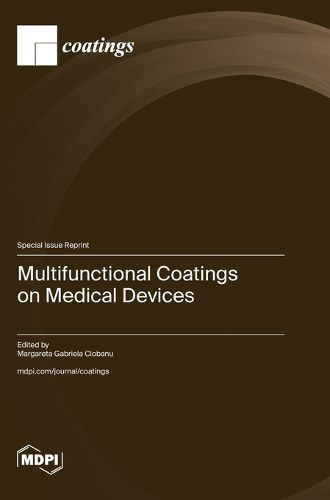Readings Newsletter
Become a Readings Member to make your shopping experience even easier.
Sign in or sign up for free!
You’re not far away from qualifying for FREE standard shipping within Australia
You’ve qualified for FREE standard shipping within Australia
The cart is loading…






This title is printed to order. This book may have been self-published. If so, we cannot guarantee the quality of the content. In the main most books will have gone through the editing process however some may not. We therefore suggest that you be aware of this before ordering this book. If in doubt check either the author or publisher’s details as we are unable to accept any returns unless they are faulty. Please contact us if you have any questions.
This Special Issue is dedicated to highlighting important advancements in the development of multifunctional coatings on the surface of biomaterials used in medical devices, such as implants, scaffolds for tissue engineering, etc. It is generally acknowledged that one of the most pressing current challenges is the development of biomaterials with new characteristics and properties that can be used in various medical applications. Medical devices are extremely useful in medicine for both diagnostic and therapeutic purposes, and have come to be widely used in plastic and reconstructive surgery, dentistry, orthopedics, neurosurgery, cardiovascular surgery, urology, etc. Multifunctional coatings can endow implantable systems with particular properties and promote their interaction with adjacent cells and tissue fluids, depending on the function and location of the medical device. Furthermore, the surfaces of medical devices can be coated with antibiotic-containing layers with the capacity to counteract bacterial adhesion. Currently, an interesting research direction concerns the development of smart coatings based on biomaterials, which change their properties in response to environmental stimuli. The immobilization of biofunctional molecules and biomolecules on biomaterials to form biofunctional coatings is another challenge that researchers are striving to overcome. Of course, many other remarkable examples could be given. The articles in this Reprint provide valuable contributions to the field of intelligent and beneficial coatings fabricated with and applied to biomaterials, and demonstrate their applications in medicine.
$9.00 standard shipping within Australia
FREE standard shipping within Australia for orders over $100.00
Express & International shipping calculated at checkout
Stock availability can be subject to change without notice. We recommend calling the shop or contacting our online team to check availability of low stock items. Please see our Shopping Online page for more details.
This title is printed to order. This book may have been self-published. If so, we cannot guarantee the quality of the content. In the main most books will have gone through the editing process however some may not. We therefore suggest that you be aware of this before ordering this book. If in doubt check either the author or publisher’s details as we are unable to accept any returns unless they are faulty. Please contact us if you have any questions.
This Special Issue is dedicated to highlighting important advancements in the development of multifunctional coatings on the surface of biomaterials used in medical devices, such as implants, scaffolds for tissue engineering, etc. It is generally acknowledged that one of the most pressing current challenges is the development of biomaterials with new characteristics and properties that can be used in various medical applications. Medical devices are extremely useful in medicine for both diagnostic and therapeutic purposes, and have come to be widely used in plastic and reconstructive surgery, dentistry, orthopedics, neurosurgery, cardiovascular surgery, urology, etc. Multifunctional coatings can endow implantable systems with particular properties and promote their interaction with adjacent cells and tissue fluids, depending on the function and location of the medical device. Furthermore, the surfaces of medical devices can be coated with antibiotic-containing layers with the capacity to counteract bacterial adhesion. Currently, an interesting research direction concerns the development of smart coatings based on biomaterials, which change their properties in response to environmental stimuli. The immobilization of biofunctional molecules and biomolecules on biomaterials to form biofunctional coatings is another challenge that researchers are striving to overcome. Of course, many other remarkable examples could be given. The articles in this Reprint provide valuable contributions to the field of intelligent and beneficial coatings fabricated with and applied to biomaterials, and demonstrate their applications in medicine.